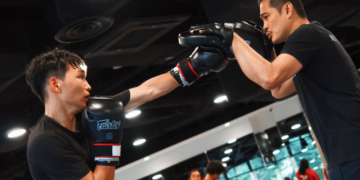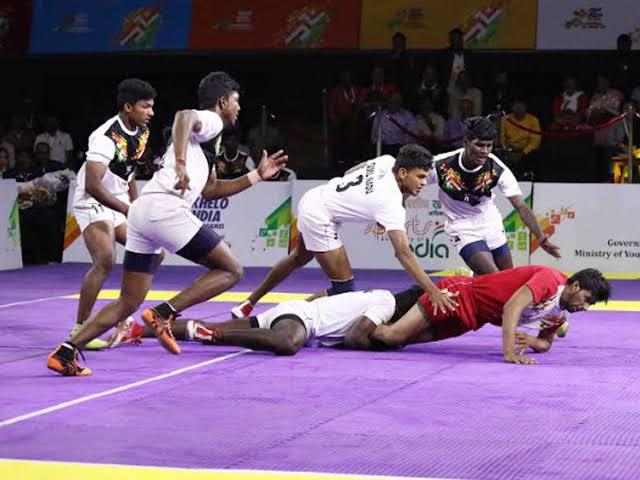
Mixed Martial Arts, or MMA, is often seen as the ultimate test of a fighter’s skill. It combines striking, grappling, and strategy into one dynamic sport. But behind every highlight reel knockout or submission win are countless hours of practice, much of which is built on drills. MMA drills are structured exercises that sharpen technique, improve reflexes, and build discipline. They form the foundation that allows fighters, and even everyday practitioners, to grow in confidence and ability.
Why Drills Are The Heart Of MMA Training
Drills are the bridge between learning a technique and applying it in real time. Watching or being taught a move is just the first step. Repetition through drills locks it into muscle memory, making it second nature when the intensity of sparring or competition kicks in.
In MMA, where fighters need to transition smoothly between striking, takedowns, and ground control, drills create fluidity. They prepare students for real fight scenarios while reinforcing discipline and patience. Whether the goal is competition or simply becoming a more well-rounded martial artist, drills are non-negotiable.
Common Striking Drills In MMA
Striking is often the first thing people think of when it comes to MMA. To throw combinations effectively, fighters rely on structured drills that sharpen timing and accuracy.
- Pad Work: Working with a coach or training partner holding pads develops speed, precision, and conditioning. Combinations can be drilled repeatedly until they become instinctual.
- Shadowboxing: Practicing techniques without equipment helps refine footwork, balance, and creativity. It allows fighters to visualize opponents and experiment with new combinations.
- Reaction Drills: Exercises like responding to a coach’s call or reacting to a partner’s movement sharpen reflexes, which are crucial in striking exchanges.
These drills not only develop power and endurance but also train the mind to remain calm and focused under pressure.
Grappling And Groundwork Drills
Grappling is where many MMA fights are decided. Drills here focus on control, transitions, and submissions.
These drills are less about brute force and more about precision and leverage. The repetition builds comfort in positions where beginners often feel overwhelmed.
Conditioning Through Drills
MMA requires stamina and strength that go beyond ordinary fitness. Drills often double as conditioning exercises.
- Ground-And-Pound Circuits: Practicing strikes from top positions while maintaining balance builds both cardio and endurance.
- Wall Drills: Training against the cage simulates real fight pressure and strengthens the ability to escape or control opponents.
- High-Intensity Intervals: Many striking and grappling drills are performed in short, explosive bursts to mimic fight conditions.
Conditioning drills teach fighters to push through fatigue while maintaining proper technique, which often makes the difference in competition.
Drilling To Build Confidence
Confidence in MMA does not come from sheer strength or aggression. It comes from knowing that your body can react without hesitation. Drills create this confidence. When a fighter has rehearsed a movement countless times, the body takes over even under stress. This reliability reduces fear, sharpens decision-making, and builds trust in one’s own skills.
FAQs About MMA Drills
Q: What Are MMA drills?
A: MMA drills are structured training exercises that focus on repeating techniques in striking, grappling, or conditioning. They help students turn learned moves into instinctive reactions.
Q: Do I Need To Spar Before Learning MMA Drills?
A: No. Drills are often the first step in training. They prepare beginners for sparring by building confidence and technical understanding in a safe and controlled way.
Q: How Often Should I Practice MMA drills?
A: Consistency is more important than volume. Training two to three times a week with focused drilling can lead to significant improvement over time.
Q: Are MMA Drills Only For ighters?
A: Not at all. While professional fighters rely heavily on drills, hobbyists and fitness enthusiasts also benefit from them. Drills improve fitness, coordination, and mental discipline for anyone.
Conclusion
MMA may look chaotic in the cage, but behind every movement is a structure built through drills. They are the foundation of striking, grappling, conditioning, and mental growth. Whether you are a beginner looking to build fundamentals or an experienced practitioner aiming to refine transitions, drills remain central to progress.
More than just repetitive exercises, MMA drills are a pathway to discipline, confidence, and clarity. They teach practitioners that mastery is not built overnight but through consistent effort over time. In a sport as demanding as MMA, drills are what transform technique into instinct and effort into achievement.
You may also like:
The Role Of Fight Replays In Developing Smarter Fighters
In martial arts, improvement does not come only from sparring or drilling techniques. Another powerful tool for growth is watching fight replays. Whether its a professional bout streamed worldwide or a recorded sparring session in…
Sparring is one of the most important parts of martial arts training. Whether you practice boxing, Muay Thai, Brazilian Jiu-Jitsu, or MMA, sparring helps you test your techniques in a realistic setting. It sharpens timing,…
Some comebacks roar. And there are comebacks whispered, tempered with emotion, healing, and the weight of time. Stamp Fairtex, the Muay Thai Queen, falls into the latter. She’s not just fighting again, she’s reclaiming a…
If you’ve spent enough time on the mats or inside the cage, you’ve probably heard two very different schools of thought when it comes to sparring. “Go hard or go home” or “Flow, don’t go.” But…
Let’s be honest. Everyone thinks aggression gets a bad rep. In day-to-day life, we’re told to stay calm, composed, and controlled. And that’s good advice for your job, at home with your family, maybe even…
In martial arts, you’ll often come across a wide range of terms used during training. But when you hear the word sparring, what comes to mind? It means stepping into the training space with another…
Brazilian Jiu-Jitsu, often called BJJ, is filled with techniques that allow a smaller or less powerful practitioner to reverse positions and gain control. Among the most iconic is the flower sweep. For students of all…
Boxing has always been a sport defined by moments. While strategy, endurance, and skill matter, it is often the knockouts that remain etched in history. A perfectly timed punch can shift the course of a…
When you first start training Brazilian Jiu-Jitsu, instructors often tell you to “use your weight” when passing guard or holding top positions. But what does that actually mean? Weight distribution is how you place and…
Starting Muay Thai is exciting, but walking into your first class can feel intimidating if you don’t know what to bring. Gloves, wraps, shorts, shin guards… do you really need them all on day one?…
A holiday doesn’t have to mean hitting pause on your martial arts journey. For practitioners of Brazilian Jiu-Jitsu (BJJ) and Muay Thai, training is more than just exercise; it’s a lifestyle. And the beauty of…
Singapore is a city that moves fast. We surf deadlines, MRT schedules, meetings, and meals. Amid all that motion, running stands out as something constant and pure: you, the road, and your breath. Marathons, in…




































